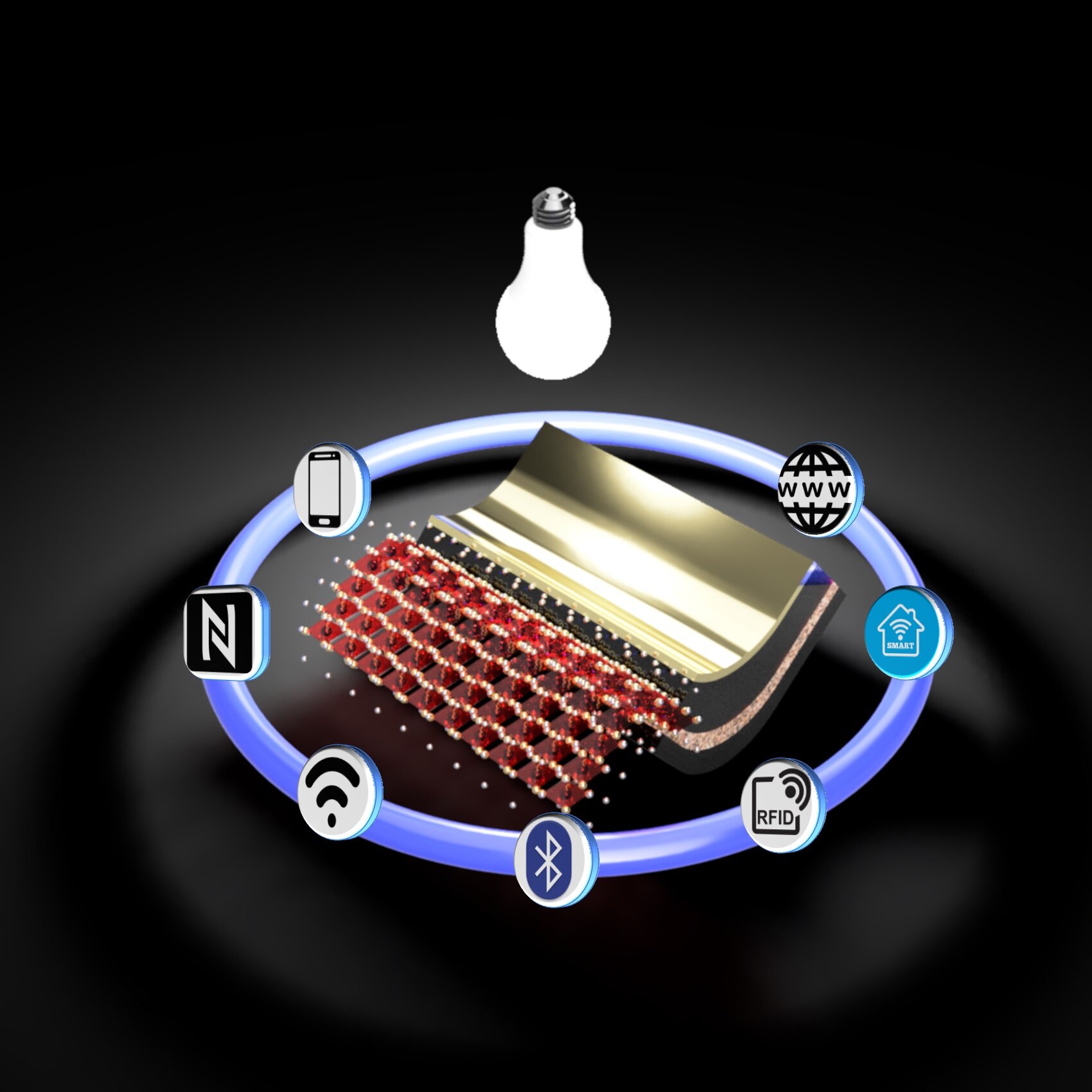
A revolution is underway in the development of autonomous wireless sensors, low-power consumer electronics, smart homes, domotics and the Internet of Things. All the related technologies require efficient and easy-to-integrate energy harvesting devices for their power. Billions of wireless sensors are expected to be installed in interior environments in coming decades.
Indoor photovoltaic (PV) power sources on ultra-thin curvable substrates have the potential to facilitate these technological innovations if they can provide sufficient energy to the electronic components while remaining small, convenient and economical. This type of energy supply will eliminate the need for batteries and provide seamless integration.
These technologies require PV cells on thin flexible substrates that can deliver excellent performance under indoor artificial lighting with the spectra and illumination levels found prevalently in homes, shops and offices (i.e., 100 to 500 lux). These values are between two and three orders of magnitude lower than those found outdoors under the sun, and which are used as standard test conditions for typical solar cells.
An international team with researchers from three countries has published the results of their project in an article in Cell Reports Physical Science.
The team members are from the Centre for Hybrid and Organic Solar Energy, the University of Rome—Tor Vergata, Universidad Surcolombiana, Neiva, Colombia, and from the Fraunhofer Institute for Organic Electronics from Dresden, Germany.
They report indoor power generation by flexible perovskite photovoltaic cells (PSCs) manufactured on roll-to-roll indium tin oxide (ITO)-coated ultra-thin flexible glass (FG) substrates with excellent transmittance (> 80%), sheet resistance (13 Ω/square) and bendability, surpassing 1600 bending procedures at 20.5mm curvature. They optimized perovskite photovoltaic cells on ultra-thin flexible glass by incorporating a mesoporous scaffold over SnO2 compact layers, delivering a large leap forward in efficiency, reaching 20.6% (16.7 μW/cm2 power density), and 22.6% (35.0 μW/cm2) under 200 and 400 lux LED illumination respectively.
The efficiencies obtained represent the highest reported for any indoor photovoltaic cell technology that is flexible and curvable, as well as surpassing by a 60 to 90% margin the prior best-performing perovskite photovoltaic cells on flexible substrates. Specific powers in Watts delivered per gram of weight (W/g) are 40 to 55% higher than their counterparts on plastic PET films and an order of magnitude greater than those on rigid glass.
These figures underline the potential of seamless integration of these ultra-thin and ultra-light energy devices in indoor electronic components. All the active layers of the perovskite photovoltaic cells were deposited at low temperature and by solution processing, meaning that roll-to-roll fabrication of devices on ultra-thin flexible glass can not only be implemented for the ITO layer but also for all other layers by printing techniques in the future.
Additionally, glass, even in its flexible form, creates an exceptionally effective permeation barrier for gases known to degrade perovskite materials, making this type of technology a potential power source for indoor electronics of the future. https://techxplore.com/news/2020-05-perovskite-photovoltaics-coated-ultrathin-glass.html?fbclid=IwAR3DmzNNQI4ZfC4mSXpdomXyrHSh7dYBQL4O32POefqV8C-HILYQxEdo05I







Recent Comments